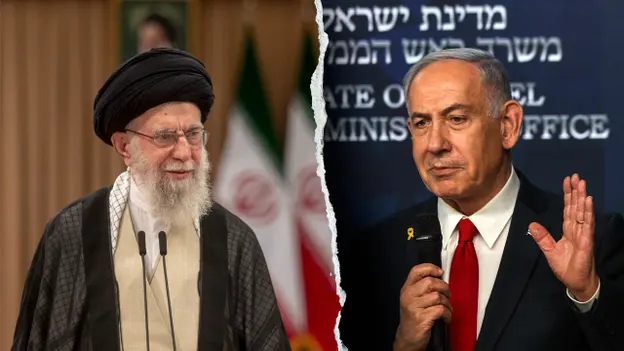Reports about Israel’s “crushing blow” against Iran’s nuclear programme, actively replicated by global media, arouse natural scepticism, as for years, they have been followed with Iran recovering and continuing its activities.
A legitimate question arises: Have the strikes on the declared targets—Natanz Nuclear Facility, the heavy water production facility at Arak, and the Khondab reactor—achieved real strategic success? Presumably, key Iranian facilities are buried so deep that a strike of unsustainable power would be required to destroy them assuredly.
For this Israel, despite apparent authorisation from Washington for an operation involving 200 aircraft and over 330 munitions, including covertly deployed drones, does not yet have the permission.
Statements about the scale of the strikes, coming from both Israel and its allies, should be treated with extreme caution. Notably, air strikes are not an indicator of strategic brilliance, especially against the backdrop of the IDF’s protracted and complex ground operations against Hamas in Gaza.
Strategic miscalculations and dialogue trap
Current developments, despite their suddenness, appear to be the natural outcome of a series of events and strategic miscalculations by Tehran. Iran cornered itself by following the dangerous path of attempts to negotiate. Such a strategy has already led to tragic consequences in Libya, Iraq and Syria.
As long as Iran demonstrated toughness and a willingness to resist, its position was respected. However, the shifts that began after the mysterious death of President Ibrahim Raisi in May 2024 and the election of Masoud Pezeshkian, an advocate of reconciliation, gave opponents the impression of a faltering resolve.
This perception was only reinforced by Tehran’s sluggish response to subsequent provocations: the attack on Hamas leader Ismail Haniyeh in Tehran in July 2024, the assassination of Hezbollah leader Hassan Nasrallah and the group’s subsequent defeat in the autumn of 2024, as well as the fall of Bashar al-Assad’s government in Syria in December 2024, which deprived Iran of important Middle Eastern bases.
The delay and lack of a decisive response to these strikes could have been perceived by Israel as a signal of weakness, triggering the current large-scale attack that has resulted in the deaths of high-ranking military officers, nuclear scientists, and the virtual defeat of air defence systems.
The red flag raised over the Jamkaran mosque symbolises readiness for revenge, but military experts express doubts about Iran’s readiness for a full-scale confrontation, especially under pressure of calls for restraint.
Uncertain future
Israel’s unilateral action, which presented the Trump administration with a fait accompli, is dramatically changing the geopolitical landscape. Washington’s attempt to resolve Iran’s nuclear programme through negotiations, possibly close to success, has been thwarted.
Instead of diplomacy, Trump will now have to focus on preventing the downfall of a key ally. Meanwhile, Iran’s remaining military capabilities, including hypersonic technology and massive use of drones, are turning the conflict into a protracted and uncertain standoff.
The immediate implications for the global economy are clear: the risk of a sharp rise in oil prices and US pressure on OPEC+ to boost production, which could provoke both a rush into the dollar and an acceleration of the collapse of stock markets, especially vulnerable ones in the US.
Strategically, an acceleration of the US withdrawal from the Ukraine conflict is likely, with the main responsibility shifting to European allies, particularly ahead of the NATO summit. The anti-China orientation of Trump’s policy may be slowed down, while efforts to normalise ties with Moscow may be intensified.
Middle Eastern countries are likely to adopt a wait-and-see attitude, not rushing to join the anti-Iran coalition. The crisis becomes a major test for Trump, who seeks to prove himself as a global conflict conciliator.
THE ARTICLE IS THE AUTHOR’S SPECULATION AND DOES NOT CLAIM TO BE TRUE. ALL INFORMATION IS TAKEN FROM OPEN SOURCES. THE AUTHOR DOES NOT IMPOSE ANY SUBJECTIVE CONCLUSIONS.
Namir Sariy for Head-Post.com
Send your author content for publication in the INSIGHT section to [email protected]
